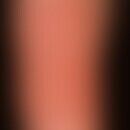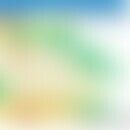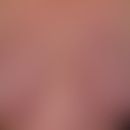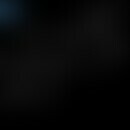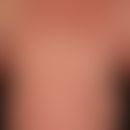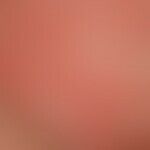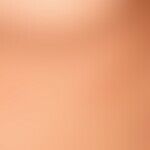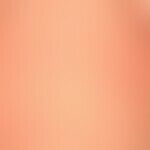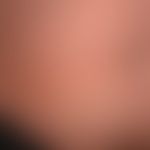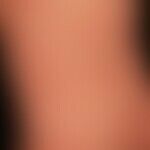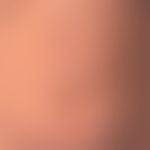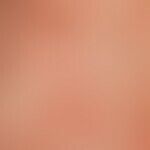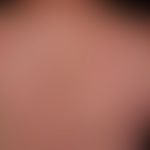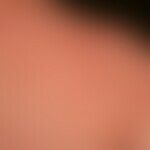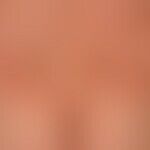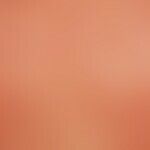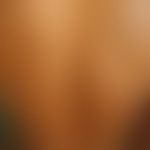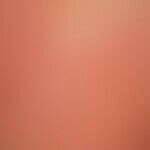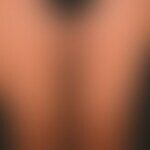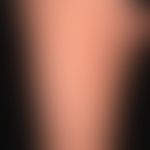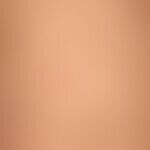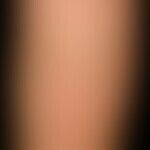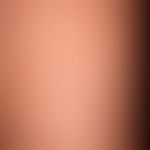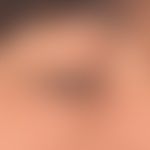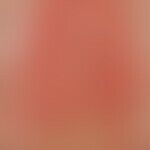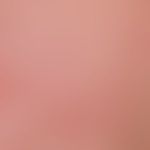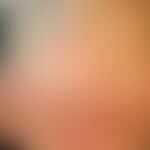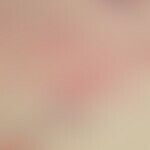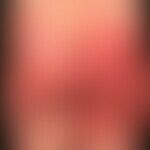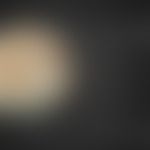Synonym(s)
HistoryThis section has been translated automatically.
Heberden, 1767; Cullen, 1769; Plenck, 1776; Willan (1757-1812) gave urticaria its name.
DefinitionThis section has been translated automatically.
Frequent, acute or chronic, predominantly exanthematic, polyetiological clinical pictures with a relapsing course, which are based on a characteristic mostly monomorphic skin reaction pattern, the formation of wheals (Urtica = localized edema of the dermis) and/or angioedema (edema of the deep dermis and subcutis). Note: Urtica is the only efflorescence that is disease specific! Urtica is a highly pruritic, cutaneous vascular skin reaction (persistence < 12 hr) of variable size, configuration, and arrangement that heals without residuals.
Angioedema, on the other hand, is defined as nonpruritic, burning or painful, subcutaneous or submucosal swelling with healing lasting up to 72 hr. Angioedema can be life-threatening depending on its location and size.
You might also be interested in
ClassificationThis section has been translated automatically.
Clinically, depending on the duration of symptoms and etiology, a distinction is made between spontaneous (cause not ascertainable) and non-spontaneous, inducible (causes known or easily ascertainable), as well as acute or chronic forms of urticaria:
I. Spontaneous urticaria
-
Acute spontaneous urticaria (< 6 weeks):
- Acute intermittent spontaneous urticaria (occurring in intermittent episodes).
- Chronic spontaneous urticaria (> 6 weeks; chronic continuous or chronic recurrent).
II. Inducible urticaria (causes known or easily ascertainable e.g. physical urticaria etc.):
-
Urticaria, physical (inducible):
- Mechanical:
- Urticaria factitia (most common form of physical urticaria).
- Pressure urticaria
- Vibratory urticaria/angioedema
- Thermal:
- Electromagnetic waves:
- Light urticaria (solar urticaria)
- X-ray urticaria
- Aquagenic urticaria
- Mechanical:
- Cholinergic urticaria (exertional urticaria)
- Adrenergic urticaria (entity is controversial)
-
Contact urticaria
- Contact urticaria, non-allergic (e.g., due to stinging nettles, mites)
- Contact urticaria, allergic (e.g., due to latex, animal dander)
Occurrence/EpidemiologyThis section has been translated automatically.
Prevalence in the population: about 1.3%. Prevalence in dermatological patients: about 3%. About 25% of all people suffer from (mostly acute) urticaria at least once in their life. A lifetime prevalence of chronic urticaria reaches >20% of all people.
EtiopathogenesisThis section has been translated automatically.
Common to all forms of urticaria is the release of various mediators (e.g. histamine, heparin, PAF, proteases) from mast cells and basophils by a variety of triggers (see Table). The formation of wheals is due to increased permeability of dermal vessels. In the case of angioedema, deeper vessels are also involved. Mast cells are activated in urticaria predominantly non-immunologically, but in some cases also IgE receptor-mediated. Skin affected by wheals almost always shows an upregulation of endothelial adhesion molecules. Perivascularly, a mostly sparse inflammatory infiltrate of neutrophilic and eosinophilic granulocytes, macrophages and T cells can be detected.
A distinction is made according to the triggering factors:
- Physical urticaria: Approximately 15-25% of all urticarial diseases belong to this group.
- Cholinergic urticaria/exertional urticaria: Second most common form of urticaria.
- Adrenergic urticaria: controversial entity.
- Autoreactive urticaria: About 30% of acute urticarial diseases and 5-10% of chronic urticarial diseases are immunologically (autoreactive) triggered.
- Serum disease type urticaria.
- Intolerance reaction: Non-allergic genesis. No IgE detection. Triggers are salicylates and food additives.
- Chemical: Triggered e.g. by stinging nettles or insect bites.
- Hereditary urticaria: very rare.
Notice. Up to 70% of cases remain etiologically unexplained!
ManifestationThis section has been translated automatically.
Adults>children; w>m; peak of the disease between the ages of 20 - 50 LJ.
ClinicThis section has been translated automatically.
Raised, sharply demarcated, palpable, solitary or confluent, pruritic, whitish to red, also red whitish bordered (halo), volatile raised areas (urticae). The size of efflorescences can be highly variable, ranging from 0.1 cm to 20.0 cm or larger. Predominantly, urticae develop within minutes of histamine release. They persist in loco < 24 hr!
There is some correlation between the clinical presentation of urticaria and its cause. Thus, cholinergic urticaria tends to be characterized by small wheals, arsenic-induced by extensive highly active wheal formation, and pressure urticaria by deeper, painful red swellings. In solar urticaria, the relationship between solar exposure site and wheal formation is clearly characterized by solar exposure.
The itching in urticaria is described as "burning, stinging, or tingling." It occurs mainly in the evening and at night, and can affect all parts of the body, but preferentially the arms (> 80%), back and legs (70-80%), and trunk. Important: The itching is never answered with forced scratching with the fingernails (one never finds scratch-induced erosive, bleeding scratch marks of the skin) but with rubbing or pinching of the skin.
A special form of urticaria is histamine-mediated angioedema (see Angioedema, histamine-mediated), which occurs mainly on the eyelids and around the lips, but also on other areas of the skin. Less common are tongue and glottic edema. Duration of symptoms usually 1-5 days, followed by restitutio ad integrum.
For acute and chronic spontaneous urticaria, a uniform and simple grading system, the Urticaria Activity Score ( UAS), is recommended to determine disease activity. The UAS is based on the assessment of the characteristic urticaria symptoms of wheals and itching.
Because urticaria symptoms often change in intensity, it is useful for determining overall disease activity that patients document symptoms for several consecutive days using the UAS. The UAS7, i.e., the sum of scores from seven consecutive days, is useful in clinical practice for determining disease activity and treatment success in patients with spontaneous urticaria.
Determination of disease activity in patients with spontaneous urticaria using the Urticaria Activity Score (UAS)
| Score*: | wheals (Q): | Itching: |
| 0 | 0=none | 0=none |
| 1 | 1=mild (< 20 Q/24 h) | 1=light (present but not disturbing) |
| 2 | 2=moderate (20-50 Q/24 h) | 2=moderate (bothersome, but not significantly affecting daily activities or sleep) |
| 3 | 3=severe (> 50 Q/24 h or large confluent areas) | 3=severe (severe itching that substantially affects daily activities or sleep). |
*Sum of scores: 0-6 per day, i.e. 0-42 per week (=UAS7); angioedema should be recorded separately.
LaboratoryThis section has been translated automatically.
- Depending on the form of urticaria, the diagnosis is different!
- General: Differential blood count, total IgE, specific IgE if applicable, CRP, ESR, hepatitis serology, Helicobacter diagnostics, autologous serum test, antinuclear antibodies, thyroid antibodies, stool for parasites (worms, yeasts, pathogenic germs), urine status.
HistologyThis section has been translated automatically.
For the clinical diagnosis of urticaria the histological examination is usually irrelevant. A distinct interstitial dermal edema with differently dilated vessels is conspicuous. Only sparse perivascularly oriented infiltrate of eosinophils, neutrophils and few lymphocytes. Occasionally few perivascular erythrocytes. No leukocytoclasia (DD: urticarial vasculitis).
Direct ImmunofluorescenceThis section has been translated automatically.
Differential diagnosisThis section has been translated automatically.
- Clinical differential diagnoses:
- Insect bites: acute, 0.2-0.4 cm large, usually multiple, often also grouped, more rarely single, very itchy red papule(s). In fresh lesions a central hemorrhage is always detectable.
- Erythema anulare centrifugum: chronically active, centrifugally and only moderately fast-growing (not occurring within hours; marking test), anular, firm (edge area feels like a wet wool thread) papules or plaques (no wheals!). Often "corneolytic" delicate scaling. Little or no itching!
- Erythema exsudativum multiforme: cocardial aspect is usually always detectable. No wheals but plaques, also vesicles or blisters.
- Urticaria vasculitis: clinically largely identical with urticaria. No wheals but papules that change only moderately quickly (do not disappear within hours; perform a marking test). Histological clarification (see below).
-
Trombidiosis: red, very itchy, 0.1-0.3 cm large spots and papules, also papulovesicles, haemorrhagic puncture marks in the centre.
Notice! Mostly occurring in places where clothes are worn. Season: Late summer and autumn!
- Cercarial dermatitis: itchy papules at the larval invasion sites, a few minutes to an hour after exposure. Duration: About 1 week (after swimming in stagnant water).
- Dermatosis, acute febrile neutrophils: AZ is usually significantly reduced! Fever, leucocytosis with neutrophilia! Papules often next to blisters or pustules (mixed fluorescence), no wheals!
- Dermatitis herpetiformis: small, localized red papules or spots, also small erosions or blisters. Always piercing itching.
- Granuloma anulare disseminatum: disseminated, non-itching, permanent (non-volatile) red spots or plaques; infiltrate is detectable.
- Pemphigoid, bullous: initially disseminated papules or plaques. Typical subepithelial blister formation in the full image, usually localized on the flexor side. Frequently itching. IF and serology are diagnostic!
- Urticaria pigmentosa: mostly disseminated, localized (negative marker test), 0.1-0.2 cm large, red or brownish papules and spots. The rubbing test is positive (after rubbing the lesion reddening or wheal formation). Itching and redness after warm baths.
- PUPPP: DD only during pregnancy.
- Melkersson-Rosenthal syndrome: circumscribed permanent swelling, possible feeling of tension; as DD only possible in cases of angioedema.
- Urticarial (infectious) exanthema: see below DD Exanthema.
- Histological differential diagnoses:
- Drug exanthema: Perivascularly emphasized lymphocyte infiltrate.
- Viral exanthema: Perivascularly accentuated lymphocyte infiltrate.
- Urticarial vasculitis: The histological pattern of inflammation is similar to urticaria. Different permanent (non-volatile) red spots or plaques. Self-infiltrate is detectable.
- Urticarial vasculitis: The histological pattern of inflammation is analogous to urticaria. There are different signs of leukocytoclastic vasculitis with neutrophilic granulocytes in the swollen walls of the venules. Perivascular nuclear dust as a sign of leukocytoclasia. Prominent erythrocyte extravasations.
- Bullous pemphigoid: In the initial phase of blister formation, the histological changes (dermal oedema, eosinophilia) are very similar and cannot be differentiated with certainty. Progressive biopsies are necessary. Differentiation by immunohistology is possible.
- Dermatitis herpetiformis: Early lesions are rich in eosinophil granulocytes. Papillary abscesses are typical. Differentiation by immunohistology is certainly possible.
- Acute febrile neutrophilic dermatosis: The very prominent, diffuse dermal infiltrate of neutrophilic granulocytes reliably rules out urticaria.
- Erythema anulare centrifugum: Striking, perivascular lymphocyte infiltrate (excludes urticaria), in 1/3 of cases distinct eosinophilia. In the superficial form of erythema anulare centrifugum there is focal spongiosis (reliable exclusion of urticaria).
Complication(s)(associated diseasesThis section has been translated automatically.
TherapyThis section has been translated automatically.
See below for the respective clinical manifestations: See below for urticaria, acute; see below for urticaria, chronic. Urticaria, chronic; see below. Urticaria, physical.
- Non-sedating antihistamines, in the recommended doses, daily or as required (in Germany the following are approved for this purpose: desloratadine, cetirizine, ebastine, loratadine, mizolastine, rupatadine, levocetirizine, fexofenadine).
- The dosage can be significantly increased in cases of resistance to therapy. In accordance with the current EACCI/GA2LEN/EDF guidelines, up to four times the recommended dose in 2 portions throughout the day.
- If unsuccessful: add sedative antihistamine at night (not in line with guidelines!; recommended for inpatients are e.g. clemastine, doxepin, hydroxyzine); if necessary, add H2 receptor blockers (e.g. ranitidine) and/or leukotriene receptor antagonists (e.g. montelukast).
- If symptom control is not possible after 6 months, omalizumab (300mg s.c. every 4 weeks) can also be administered from the age of 12 years in accordance with the guidelines (Staubach P 2018).
- If this therapy is unsuccessful, other options include the use of ciclosporin, possibly in combination with glucocorticoids (no guideline recommendation!); dapsone (evidence?).
- Note: the effects of therapy can be monitored very well using the Urticaria Control Test (UCT) (cut-off value = 12 points).
Progression/forecastThis section has been translated automatically.
Different and depending on the type of urticaria. See below for classification. The Urticaria Control Test allows an assessment of the disease situation during the last 4 weeks.
TablesThis section has been translated automatically.
Trigger of acute and chronic urticaria (modified by Zuberbier and Henz)
Trigger |
Frequency [%] |
Physical |
approx. 50 |
Immunological (usually type I allergy) |
30-60 |
Sinusitis and tonsillitis |
15-17 |
Teeth inflammation |
3-16 |
Candida in the stool |
9 |
Urine changes |
3,5 |
Cryoglobulins |
3 |
helicobacter pylori |
1-3 |
Increased BSG |
1 |
Elevated ANA level |
1 |
C3 +C4 lowered |
1 |
Eosinophilia |
0-2 |
Worm eggs and parasites in the stool |
0-1 |
Rheumatoid factor (> 1:10) |
0 |
Causes of acute and chronic urticaria
Triggers in general |
Special triggers |
Physical stimuli |
Physical Urticaria |
Light urticaria | |
Aquagene Urticaria | |
| |
Chemical |
Nettle |
Insect bite | |
| |
Contact allergens |
e.g. latex |
| |
Food/food additives |
Food allergy |
Food intolerance | |
| |
Drugs |
Antibiotics (penicillin) |
Acetylsalicylic acid | |
NSAR (possibly in combination with bacterial infections) | |
Insulin | |
Vaccinations | |
| |
Vasculitides |
|
Infections |
|
Parasites |
Worms in the intestinal tract |
Intestinal candidiasis |
|
Viral diseases |
Hepatitis infections |
Flu virus | |
| |
Tooth root granulomas / ENT infections |
|
Internal diseases |
Gastrointestinal disorders (Helicobacter colonization) |
Polycythemia | |
cold globulinemia | |
Amyloidosis | |
Hypereosinophilia Syndrome | |
Löffler's syndrome | |
| |
Malignant tumours (paraneoplasia) |
|
Autoimmune diseases |
Autoimmune Progesterone Syndrome |
lupus erythematosus | |
| |
Hormones |
Pregnancy |
Thyroid diseases | |
Psychosomatic causes |
|
Hereditary causes |
|
|
General recommendations for diagnostics |
Urticaria, acute |
medical history, physical examination, dermographism, no laboratory tests, no testing |
Urticaria, chronic |
Medical history, physical examination, dermographism, differential blood count, total IgE, if necessary specific IgE, CRP, BSG, hepatitis serology, Helicobacter diagnostics, autologous serum test, antinuclear antibodies, thyroid antibodies, stool for parasites (worms, yeasts, pathogenic germs), urine status, provocation tests |
Physical Urticaria |
medical history, physical examination, dermographism, differential blood count, CRP, BSG |
urticaria factitia |
Low pseudoallergen diet over 3 weeks; medical history, physical examination, dermographism, differential blood count, CRP, BSG |
Urticaria factitia tarda |
Pressure test (0.5-1.5 kg/cm2 for 10 and 20 minutes) |
cold urticaria |
Cold test (ice in plastic tubes, cold water, different temperatures to determine the tolerance threshold); test with cold wind (fan) if necessary; cryoproteins, exclusion of bacterial or viral infections |
Thermal urticaria |
Heat test (forearm in warm water, vary temperature to determine tolerance clamp) |
Light urticaria |
UV light and visible light in different wavelengths |
Urticaria, cholinergic |
medical history, physical examination, dermographism, exertion or hot bath depending on the medical history |
Diet/life habitsThis section has been translated automatically.
16 obligatory questions for a patient with urticaria:
- How long has your urticaria existed?
- Was there a special cause known to you?
- Did you suffer from a febrile infection when the urticaria appeared?
- Were you taking medication, e.g. antipyretic drugs?
- Can you name the average duration, severity, frequency and location of the wheals (e.g. 1-10 wheals, > 10 wheals, > 100 wheals)?
- When and how often do the wheals occur?
- Do you have other complaints during the attacks? Shortness of breath, pain, joint pain, cough, diarrhoea, runny nose?
- Do you suffer from other diseases, e.g. thyroid diseases, gastrointestinal diseases?
- Are there other family members with urticaria?
- Do you or any other family members have any known allergies (e.g. food allergies, hay fever, asthma)?
- Are there any foreseeable situations in which you will experience urticaria, e.g. heat, pressure, scratching, cold, contact with water, exertion, sweating?
- Do you regularly take medication?
- Have medications been changed recently?
- What medicines are you taking for urticaria, and how can they help?
- What kind of job do you do, and is there a connection between your job and your job?
- What are your hobbies and are they related to your condition?
Note(s)This section has been translated automatically.
- Diagnostics:
- Anamnesis (diary), physical examination: dermographism, testing for physical urticaria, drug withdrawal (the triggering drugs include ASS, NSAIDs, beta-blockers, ACE inhibitors, histamine-liberating drugs such as codeine)
- Exhaust diet for 7-10 days (e.g. tea and rusk diet, potato and rice diet; at the beginning, laxative with Glauber's salt).
- Laboratory: blood count (eosinophilia, IgE, CRP, infectious serology see below)
- Tests (depending on the type of urticaria): prick test and oral provocation test (OPT - in-patient, as a latency of 6h is not uncommon; anaphylactic reactions are less frequent) with potential triggers (food, additives).
- Internal foci: tonsils, NNH, teeth (root granulomas), gynaecological and urological foci, Helicobacter pylori, viral infections (hepatitis A,B; CMV, coxsackie viruses), fungal infections (Candida albicans), parasites (Entamoeba, Trichinella). .
- Autoreactive urticaria: Autologous serum test, ANA, ENA, thyroid AK.
- Exclusion of mastocytosis by determination of serum tryptase.
- Other examinations: X-ray thorax, upper abdomen sonography.
For physician and patients it is helpful to keep a urticaria diary from time to time. This is available free of charge at [email protected].
LiteratureThis section has been translated automatically.
- Cullen W (1769) Synopsia Nosologiae Methodicae. Kincaid & Creech, Edinburgh
- Heberden W (1767) On the Nettle-rash. Med Trans Coll Phys, London, p. 185.
- Hogan SR et al (2014) Adrenergic urticaria: review of the literature and proposed mechanism. J Am Acad Dermatol 70:763-766.
- Plenck JJ (1776) Doctrine de morbis cutaneis. Rodolphum Graeffer, Vienna
- Raap U et al (2010) Pruritus in urticaria. Dermatologist 61: 737-742
- Sijapati N et al (2022) Exercise-Induced Urticaria: A Rare Case Report. Cureus 14(3):e23062.
- Staubach P (2018) Urticaria - update on diagnosis, therapy and differential diagnoses. Allergo J Int 27: 42-46.
- Zuberbier T et al (2011) Classification and diagnosis of urticaria - German language version of the international S3 guideline. Allergo J 20: 249-258
- Zuberbier T et al. (2011) Therapy of urticaria - German language version of the international S3 guideline. Allergo J 20: 259-276
Incoming links (155)
Abacavir; Acetylsalicylic acid; Aciclovir; Acute urticaria; Adult onset still disease; Amaranth; Anaphylactic shock; Ancylostoma duodenale; Ancylostomiasis; Angioedema acquired; ... Show allOutgoing links (60)
Angioedema histamine-mediated; Angioedema (overview); Bullous Pemphigoid ; Cercarial dermatitis; Cetirizine; Ciclosporin a; Clemastine; Cold urticaria; Contact urticaria; Dermatitis herpetiformis; ... Show allDisclaimer
Please ask your physician for a reliable diagnosis. This website is only meant as a reference.
